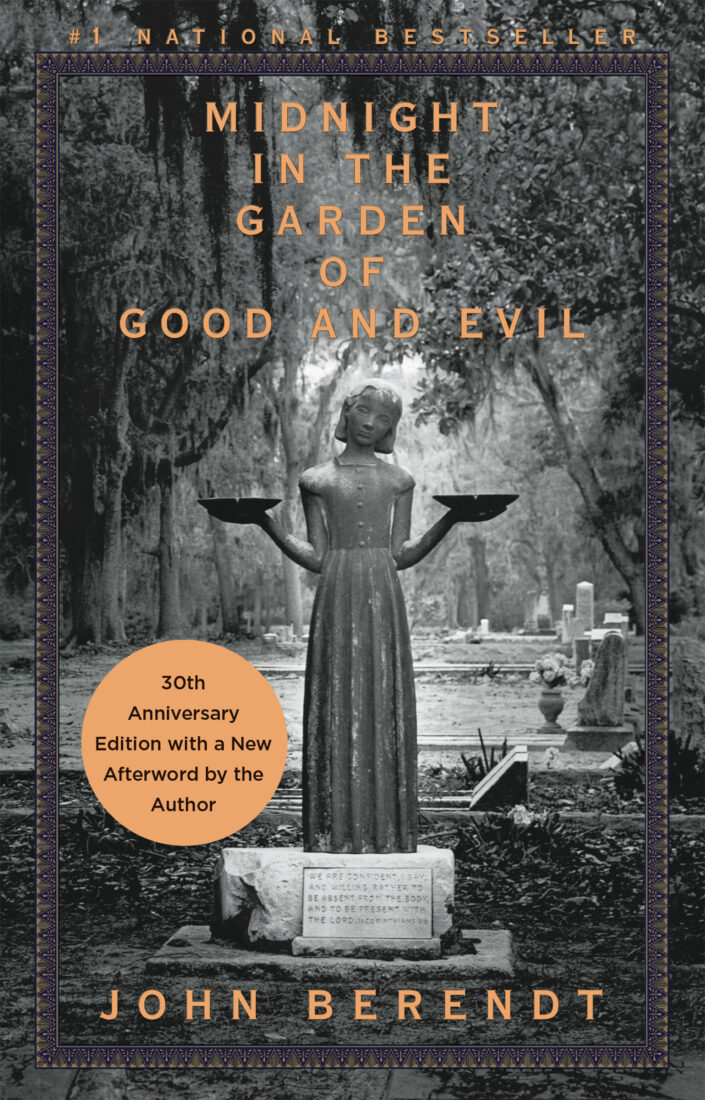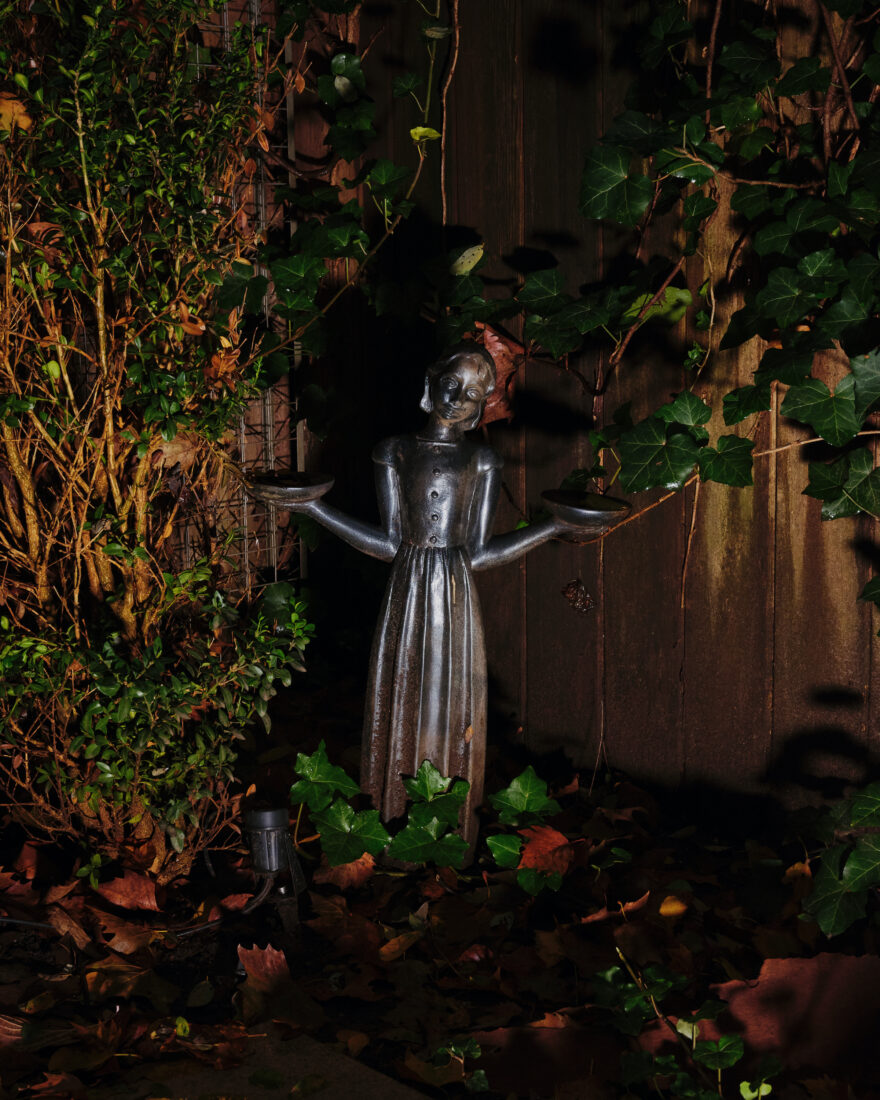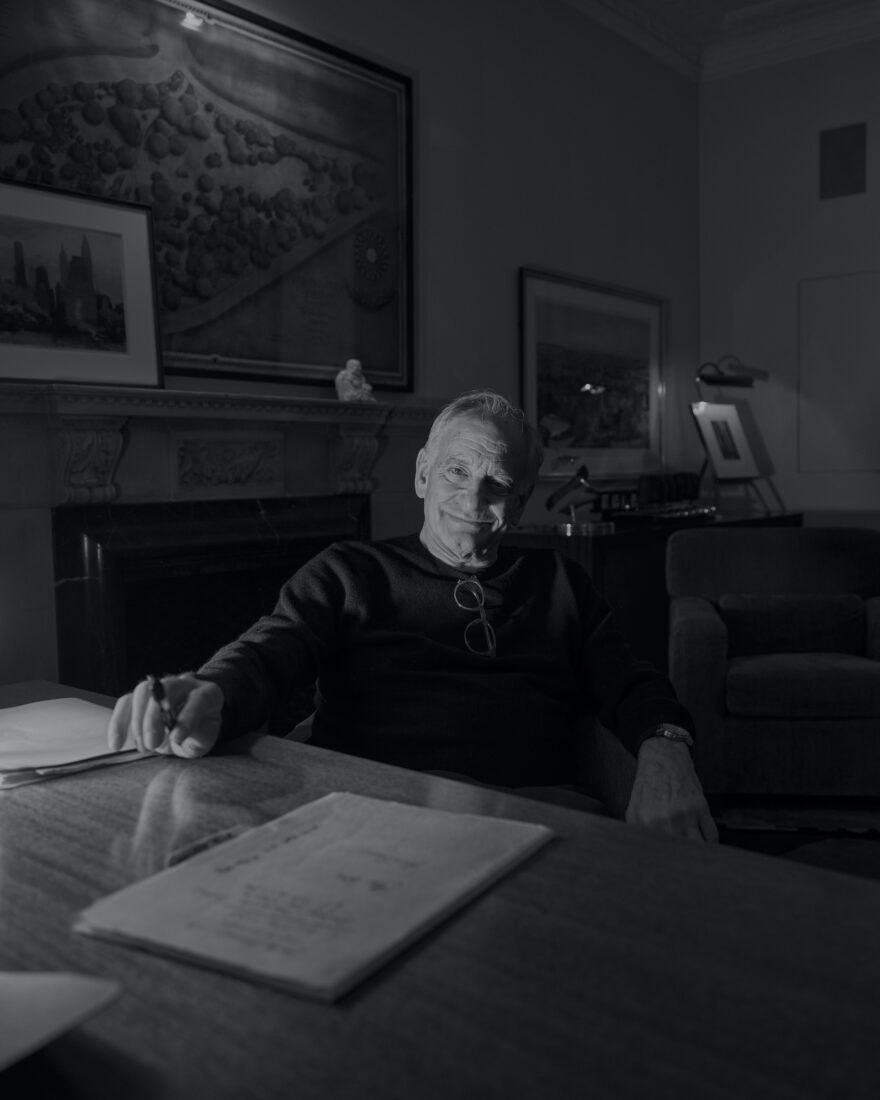A little more than three decades ago, a Savannahian pulled the journalist John Berendt aside and told him, “As far as Savannah is concerned, being a writer and being from New York is a deadly combination.”

“I understand,” he told her. “But I have no intention of being secretive. I will let everyone know I’m writing a book.”
That nonfiction work, Midnight in the Garden of Good and Evil, is now referred to in Savannah as simply, “the Book.” A mega-success that spent 216 weeks on the New York Times bestseller list (still the record for a hardcover), it went on to become a film directed by Clint Eastwood and will soon be a Broadway musical. It’s considered one of the great literary portraits of any city. The personality of Savannah itself propels each page—creaking art-filled mansions, unforgettable characters like the Lady Chablis, the magnetic and moody Bonaventure Cemetery, Chatham Artillery Punch–fueled parties, and the unraveling of a murder that somehow, in some way, involves just about everyone.

To mark thirty years since its 1994 publication, the publisher will release an anniversary edition that includes a new afterword by Berendt. In it, he describes the changes he’s seen in Savannah, and the surprising effect his work had on the city. We spoke with Berendt about the anniversary, other Southern towns he loves, and one detail he promises to share the next time he gets back down South.
You’re in your home office in New York, and I saw some pictures of it—looks like you have some Savannah memorabilia?
I’m an eclectic collector. Art, books. There’s a company in Savannah called Byrd’s that makes cookies, and they did a nice tin of cookies and asked if they could use the cover of Midnight on the tin. Well, they did a beautiful job, and I’ve got that in here. I donated all my cookie royalties to charity. There’s a Bird Girl statue in the window. The hallway just outside my office is full of pictures, organized like a puzzle, many of Savannah, just covering the walls.

Any by Jack Leigh, the famous Savannah photographer?
I knew Jack, he was a very good photographer. He took the cover of Midnight in the Garden of Good and Evil, the picture of the Bird Girl statue. Random House wanted to take the cover in Savannah, and to their credit they hired a local photographer. They were thinking about the spiral staircase in the Mercer House. But I told them, you can’t do better than Bonaventure Cemetery. Jack went there and found the Bird Girl. It was not a tombstone, it was an ornament in a family plot. When I saw that picture, it was just a fuzzy photocopy, not as sharp as the final, but I knew immediately it was a brilliant cover, mysterious and striking.
You’re from New York—did that help or hurt you while building trust with your sources?
The same person who told me, “Being a writer and being from New York is a deadly combination,” told me, “You will find yourself with another problem—no one will talk to you.” Well, she wasn’t right about that. Savannahians love to talk, and they’re great at telling stories. I viewed every interview as a conversation, not a quiz. I wasn’t there to get a specific answer, and much of the time I gave as much information in the conversation as my sources did. I had been the editor of New York magazine, and an editor at Esquire, so I had journalism in my background.
What’s funny is, while that went a long way in Savannah, for my next book, The City of Falling Angels, in Venice, they were not at all impressed that I’d been a New York editor. The Italians cared that I’d written Midnight, translated to Mezzanotte nel Giardino del Bene e del Male! They cared that I’d been part of a movie by Clint Eastwood. Midnight gave me my bona fides.

Do you think John Cusack, who played you in the film, did you justice?
John Cusack, I like him enormously. You have to understand that for the movie, they had to change a lot. I think he was very winsome, and I don’t know if I’m winsome.
So exactly thirty years ago, Midnight the book is about to come out. Set the scene.
Random House sent the manuscript or galley to various news outlets, and one was Good Morning America. The person who read it loved it and said, “We want to do a tour of Savannah with John Berendt!” They decided I would be the guest host in Savannah not for five minutes but for twenty minutes. The book hit the bestseller list and it snowballed. I went from unknown author to one thing leading to another and…it was a total surprise.
See, I didn’t have an advance on the book or show it to anyone while I was working on it. When it was done, I took it to my agent, and she read it and said it was “too local.” I didn’t argue because I didn’t want to cause a ruckus, but I could have tossed back how Flannery O’Connor said that all literature is local or regional. But I’m glad, in retrospect, that she turned it down. I got a new agent, who took it to five publishers. Every one of them wanted it, and we had a bidding war.
Tell me about the real-life Lady Chablis; was she the first person you ever heard say, “Spill the tea”?
In the book, I caught her saying, “Pour the tea!” And I noticed later it’s referred to as “spill the tea” and attributed to her. But I think she really meant pour the tea, like come on, tell me what’s going on. She was being secretive and fun. She was something. She was quite a discovery. When the Lady Chablis died in 2016, the [now-deceased] defense attorney Sonny Seiler said to me, “Now that Chablis has died, I’m the last living major character!” And I said, “Sonny, I’m still alive!”
The other major character is the city of Savannah itself.
When I’ve gone back, so much has utterly changed, and I don’t know the city as well. I don’t know what’s new, or most of the restaurants. But I hear the Crystal Beer Parlor is still a very popular place downtown and, although they don’t have those booths with the high backs anymore, they still make great hamburgers. Savannah is very close to my heart, and I hope that they continue to protect it. I haven’t wasted any opinions weighing in on changes here and there. When I went back, I was amazed at all kinds of big buildings shooting up, but most of them are ringing the historic district or out of sight below the bluff along the river. I just hope they keep the Oglethorpe Plan intact. The design with the squares is the gem that makes Savannah special.

What’s this I hear about a Midnight musical? Your book became a movie, and now a musical? This is the stuff of a writer’s dreams!
Or nightmares! [Laughs.]
Are you involved at all?
No, not really. The last person any director or producer wants to see is the author. But I’m going to read the script and make sure there’s nothing dangerously wrong. I look forward to seeing it.
Okay, rapid fire: biscuits or cornbread?
Cornbread.
Sweet tea or bourbon?
Sweet tea.
Magnolia or live oak?
Oh, that’s not fair. Both are beautiful. I guess live oak, because it immediately sets the character of a city.
Favorite Southern city besides Savannah?
Tie between New Orleans and Charleston.
Favorite small town in the South?
Bluffton, South Carolina. The atmosphere, the look of it, the people.
Southern writers you like to read?
Flannery O’Connor and Eudora Welty for classics. And Pat Conroy—we were friends.
If someone is reading the book for the first time, what should they keep in mind?
Just enjoy yourself. I wrote it as entertainment. I wrote it with you, the reader, in mind.
Looking back now, was there anything not in the book you wish you would have included?
I shoehorned so much in there. I don’t have any regrets about anything, otherwise I’d be tortured! I’m lucky. But there is one guy I would have loved to put in. I interviewed him, but I didn’t get to him. I can’t remember his name right now, can I get back to you?
Hear more from John Berendt—and hopefully more about that mysterious bonus character—when he takes part in our G&G Reads book club event in Charleston. Sign up for G&G Reads here. The thirtieth anniversary edition of Midnight in the Garden of Good and Evil, with a new afterword by Berendt, is available at bookshop.org.
Garden & Gun has affiliate partnerships and may receive a portion of sales when a reader clicks to buy a product. All products are independently selected by the G&G editorial team.








